Certainly, one thing that can be said for musical instrument design of the mid-nineteenth century is that no one had quite made up their minds. The myriad types and styles of instruments are a history lesson in themselves. In the 1830’s, chromatic brass instruments had obtained valves, and they left behind the keys of the keyed bugles and ophicleides of the early 1800’s. Below are examples of the types of instruments that could be found in bands of the era and some of the many types of valves that had been invented.
The over-the-shoulder horn is probably most identified with the Civil War band, although bands often had the more typical bell-front or bell-up instruments as well; sometimes well mixed in a single band. When possible though, bands usually opted for a matched set of one configuration (OTS or upright), though the chief musician (usually a cornettist) would often have a circular or bell-front instrument to solo with in these bands. Helicons were preferred for mounted bands, and were more common after the Civil War. There were also more unusual horns – the teardrop instrument (an Eb bass) is by Schreiber, who built them in all voices from the Eb cornet on up.
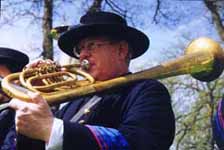 |
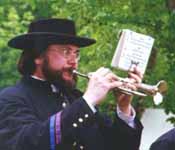 |
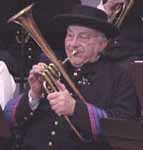 |
| Over-the-shoulder | Bell-front | Bell-up |
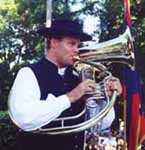 |
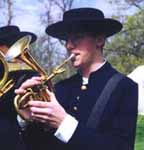 |
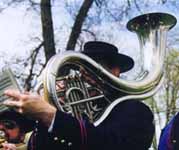 |
| Helicon | Circular | Teardrop |
Of the bell-front cornets found, two valve styles prevailed: the side and top-action; the top-action being the most common style today (with modern piston valves usually). Bell-front or “solo” altos and tenors could also be found with similar valve actions.
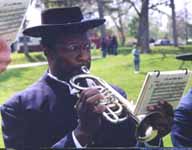 |
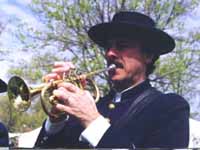 |
| Side-action | Top-action |
Of the bell-up instruments or uprights, which were made in every voice, valve actions could be side, top, or front-action as pictured. Bell-up cornets tended to be only top-action.
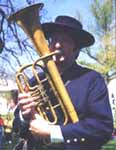 |
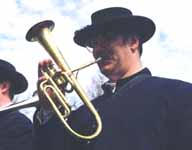 |
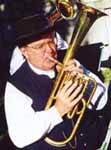 |
| Side-action | Top-action | Front-action |
Valve Types
Not the earliest type of valve, but the most common in the 1860’s was the rotary valve. The mechanical action was invented and more prevalent in Europe, and on European-made instruments, while the string-action rotary valve was largely an American innovation. The Allen valve is a variation which narrows the valve port to a tall oval, which enables the valve to be made much smaller in diameter – leaving the valve action much quicker. The second type most found was the Berlin piston valve; a short, fat piston valve that guided on a screw through the valve wall in a slot cut into the side of the valve. It was one of the earliest valves invented, and one of the longest-lived. Perinet, or French-style piston valves (precursor to the modern piston valve) had been invented, but were somewhat different than modern valves in the port styles and windways through the valve section; the one pictured has flattened oval ports and valves of three different lengths. Older types still in manufacture at the time would have been Stolzel valves, which were narrow piston valves with ports not only through the valve, but out the bottom of the valve as well – most commonly seen on cornopeans, though occasionally in other voices. The Vienna valve (one of the earliest and most primitive types) is a twin-piston valve with one port through the valve, and one passing out of the bottom. The air passes out of the bottom of the first, out into the valve slide tubing and passes back through the bottom of the second one before exiting to another valve or piece of tubing.
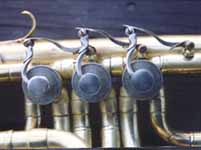 |
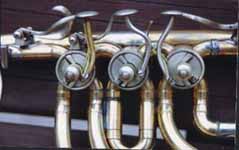 |
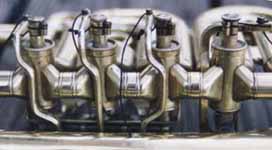 |
| Mechanical-action | String-action | Allen patented |
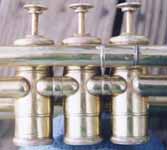   |
 |
| Berlin | Stolzel |
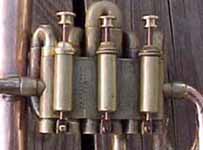 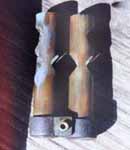 |
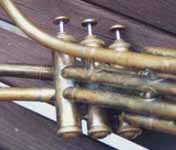 |
| Vienna | Perinet |
